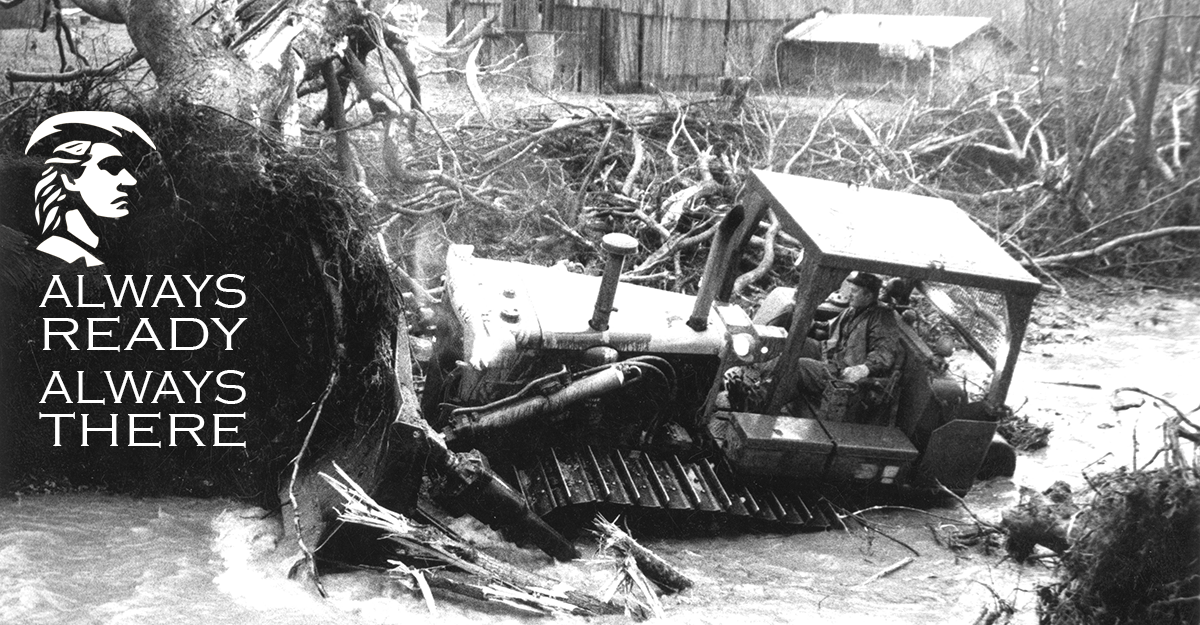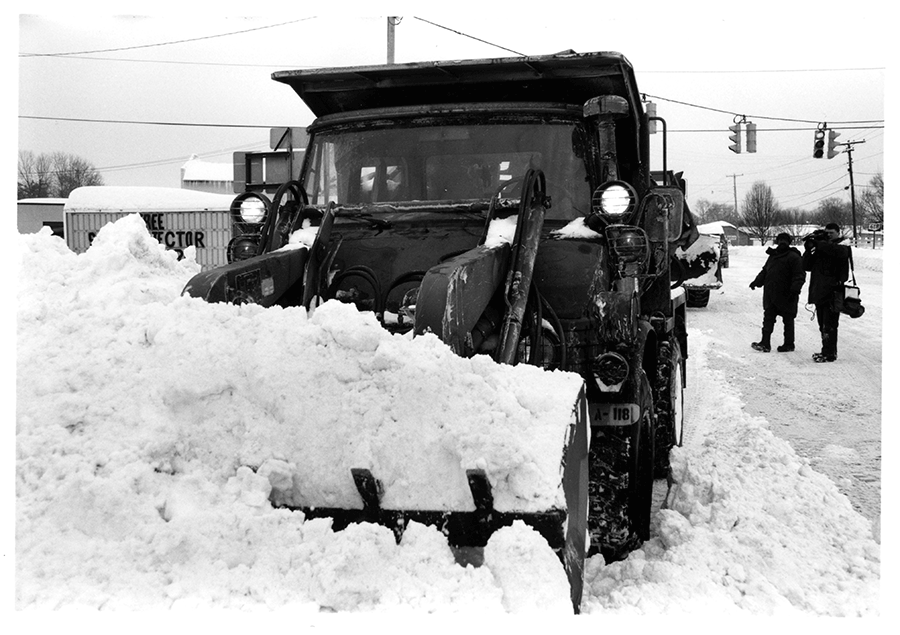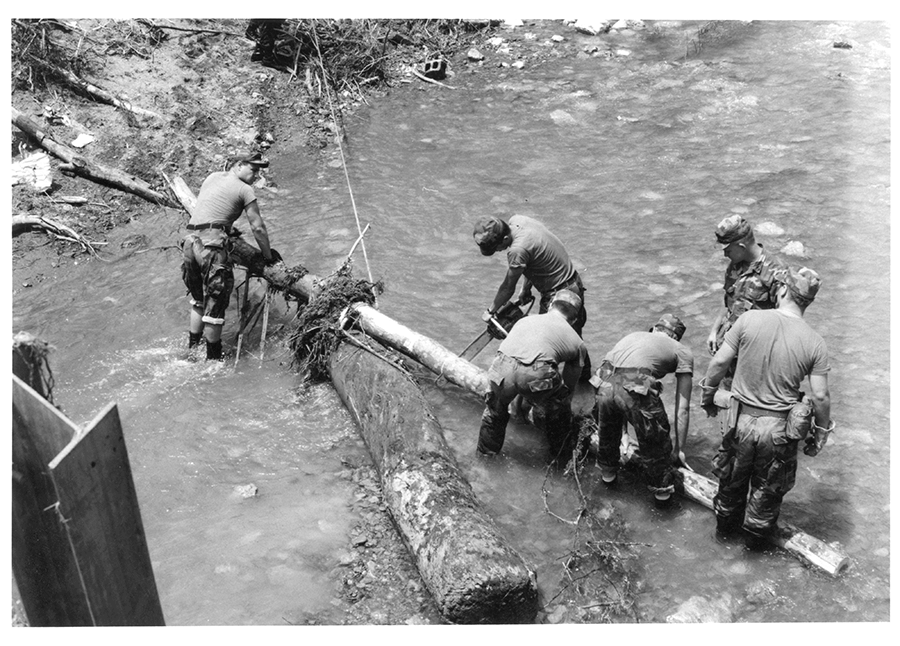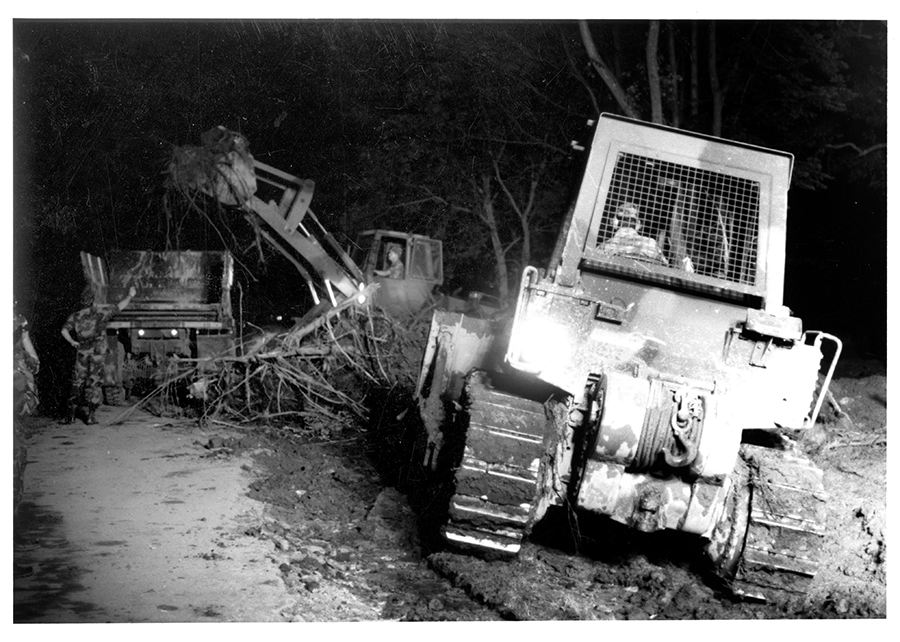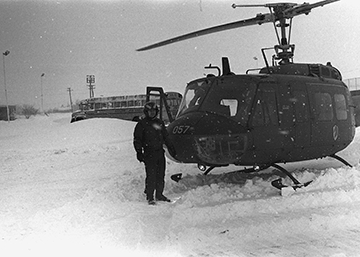Ready when needed: Ohio National Guard’s history of supporting Ohio during times of emergency
Story by Sgt. 1st Class Chad Menegay, Ohio National Guard Public Affairs
COLUMBUS, Ohio (03/21/20)
The Ohio National Guard provides a versatile array of services to assist first responders and citizens in the aftermath of natural disasters or emergencies. The ONG has responded with full-spectrum recovery and support efforts to those affected by incidents like floods, snowstorms, pandemics, wildfires and hurricanes.
In 2009, when the H1N1 Pandemic hit, the ONG answered Ohio’s call to duty, distributing vital H1N1 antiviral medications and other medical supplies. In addition, the ONG hosted a vital no-cost H1N1 clinic providing vaccinations and nasal spray to fellow Ohioans in need at the National Guard Armory in Medina.
Guard members can be found in every county of Ohio and about 80% of them have civilian jobs like other Ohioans, but are ready and trained to put on a uniform and serve the state when needed. This proximity and diversity of skills that Guard members bring from their civilian careers allows the ONG to respond quickly to any threat that endangers fellow citizens or the homeland.
In 1978, ONG Soldiers and Airmen were activated by Gov. James A. Rhodes to leave their families and homes to provide support across all 88 counties over an 11-day period following a severe blizzard that struck Ohio. The blizzard brought 12-14 inches of snow with 50-70 mph winds and a wind chill of minus 70 degrees. The Ohio National Guard used 800 of its vehicles and 45 helicopters to evacuate stranded motorists, deliver supplies and remove snow. In addition, armories were opened to house and shelter those citizens who were stranded or had no heat.
In 2014, the ONG delivered water purification systems, pallets of bottled water and packaged meals to people of the greater Toledo area after a harmful algae bloom affected the Toledo public water system and city officials issued a “do not drink” notice in the affected areas.
In 2017, after Hurricane Harvey, Irma and Maria hit, more than 400 OG members deployed to help with rescue and relief efforts in Texas, Florida, the U.S. Virgin Islands and Puerto Rico, providing assistance and equipment in the form of communications, medical aid, transportation, shelters, mobile kitchens, water purification and imagery analysis.
Most recently, to aid residents of Puerto Rico after a series of earthquakes caused widespread destruction, ONG members provided emergency aid to protect the lives, safety, health and property of those citizens affected.
The specialized skills and unique capabilities of the ONG can play a vital part in the state’s unified response during domestic emergencies and allow Guard members to support first responders in times of crises, when called to assist. Ohio National Guard medical units, for example, are capable of providing medical support such as trauma health care, preventive medicine consultation, optometry support, mental health consultation and evacuation of patients.
The ONG’s role as the state-controlled organized militia allows its members to develop close relationships with state and local agencies and officials and train with them regularly, which helps the ONG respond quickly and effectively in times of disaster, when requested.
The Ohio Emergency Management Agency is the central point of coordination within the state for response and recovery during disasters and public emergencies. The Ohio National Guard cannot activate any service members without being requested and authorized by the governor.
Ohio Revised Code Section 5923.21 authorizes the governor to call up, by proclamation, the Ohio National Guard to aid civil authorities by acting in the event of a disaster, enforcing the laws of the state or performing other duties and functions to promote the health, safety and welfare of Ohio citizens.
About 450,000 Soldiers and Airmen serve in the National Guard across every state and territory and its domestic mission is simple — serve and protect the homeland. In 2019, the National Guard, as a whole, responded to 63 natural disasters, including seven hurricanes or tropical storms, 19 floods, 20 winter storms and 12 fires.
With a bench of nearly 17,000 members who live and work throughout the Buckeye State, the Ohio National Guard is always ready and always there during times of emergency or disaster, as it has been for decades, serving Ohioans — as Ohioans.
